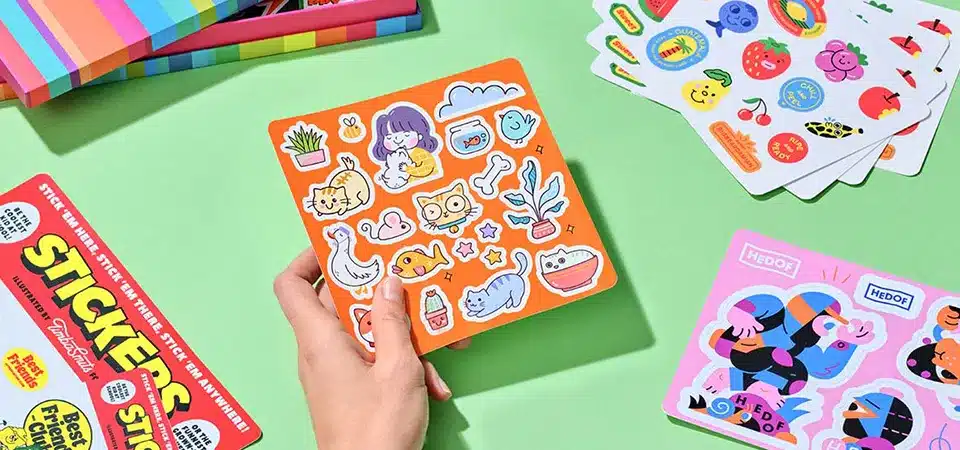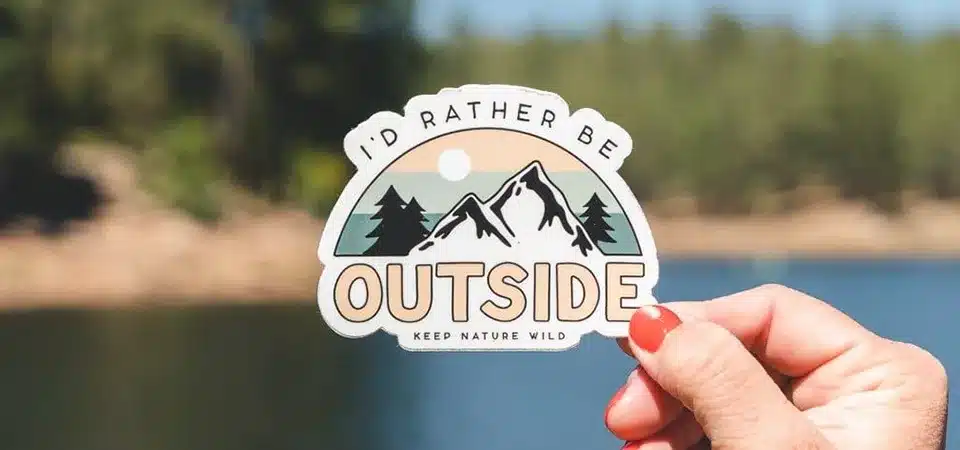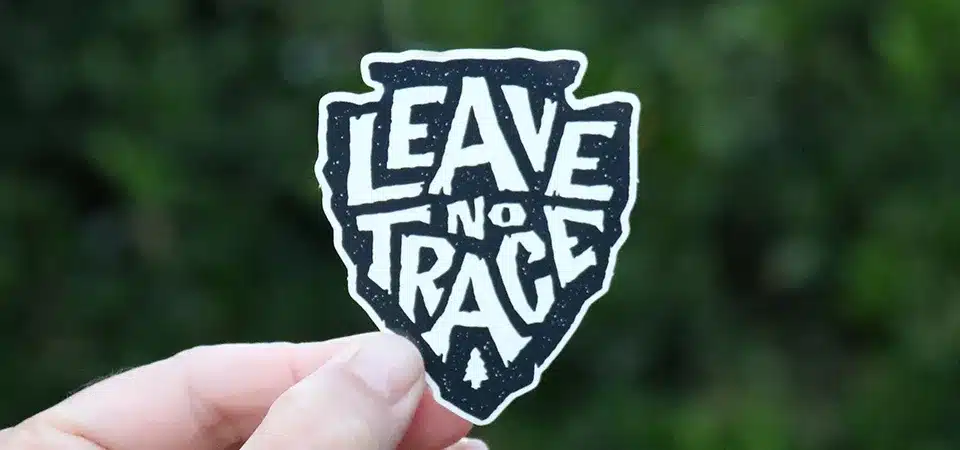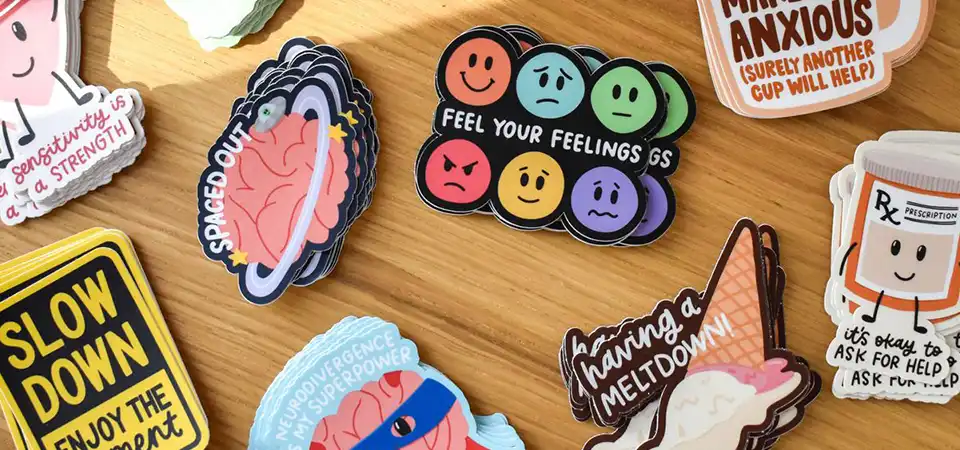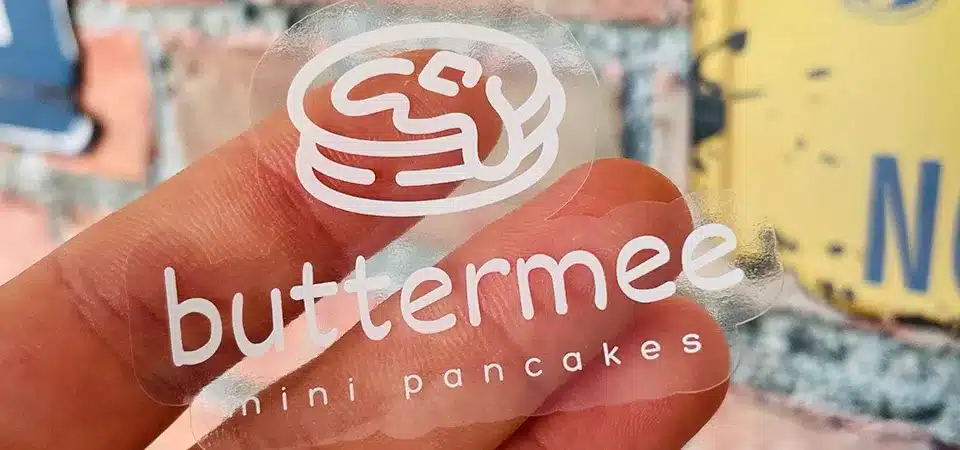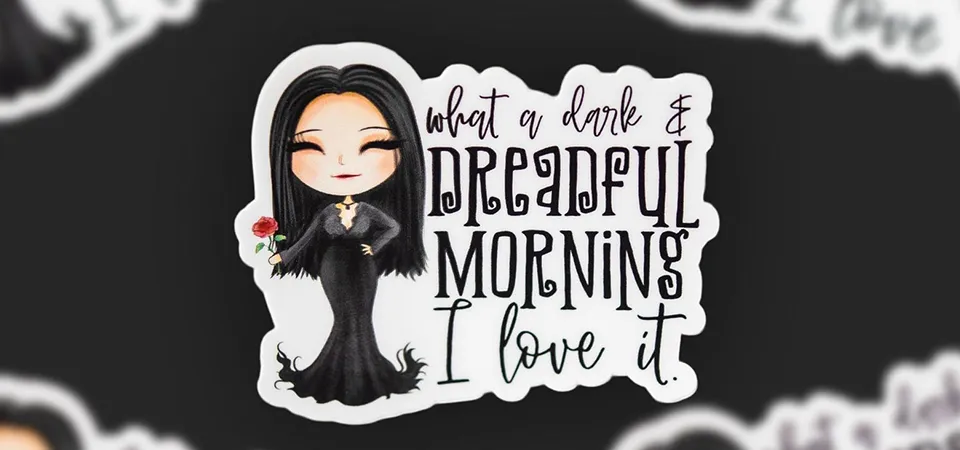Your brand gets lost in a sea of boring, square labels. They don't capture your identity, so customers just walk by, and you miss out on making a real connection.
A custom sticker is a personalized adhesive label made specifically for you. You choose the exact shape, size, material, and design. Unlike off-the-shelf options, they are created to perfectly match your brand's logo, artwork, or promotional needs.
As someone who runs a sticker printing business, I see the power of "custom" every single day. A custom sticker is more than just a piece of sticky paper; it’s a tiny piece of your brand that you can give to the world. It’s the difference between a generic "thank you" note and a handwritten one. The custom element—the unique shape, the specific color, the feel of the material—is what makes it special. It tells your customer that you care about the details, and that makes them care more about you. Let's peel back the layers and see what really goes into one.
What is a custom sticker made from?
You think a sticker is just a piece of sticky paper. But cheap stickers peel, fade, and make your brand look bad. Understanding the layers helps you choose one that lasts.
A quality custom sticker is a multi-layered product. It's made from a protective top laminate, vibrant ink, durable vinyl or paper media, a specific adhesive for its purpose, and a release liner or backing paper that makes it easy to peel.
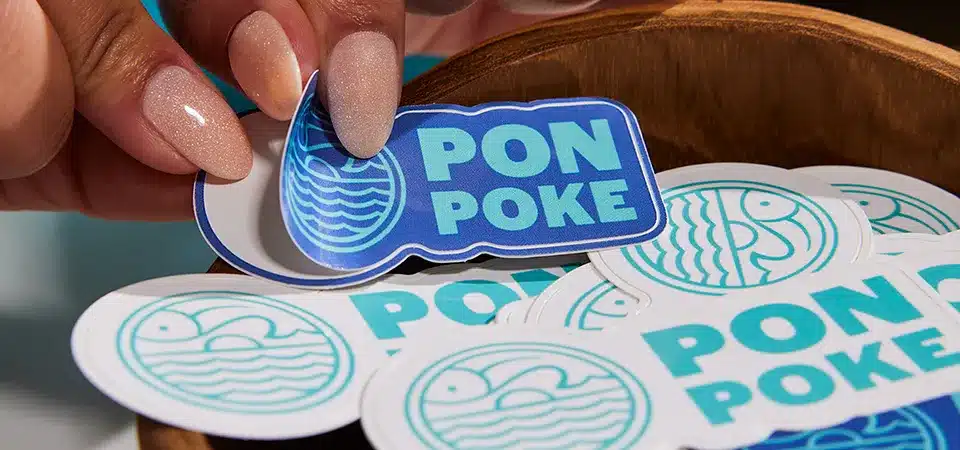
When a client comes to me, we don't just talk about the design. We talk about the sticker's job. Is it going on a water bottle that will go through the dishwasher? Or is it for a product package that will sit on a shelf? The answer determines how we build the sticker. A high-quality sticker is like a small sandwich, with each layer having an important role.
| Layer | Purpose |
|---|---|
| Laminate | A clear top layer that protects the ink from scratches, water, and sun. |
| Ink | The vibrant colors that bring your design to life. |
| Media | The main material, usually durable vinyl or paper. |
| Adhesive | The sticky layer, which can be permanent, removable, or repositionable. |
| Backing Paper | The paper you peel off, which has a silicone coating for easy release. |
I remember a new coffee shop owner who wanted stickers for her reusable cups. She almost chose simple paper stickers to save money. I explained that water and daily use would destroy them in a week. We switched to a laminated vinyl sticker instead. Months later, she told me customers were still using the cups, and the stickers looked brand new. That's the power of choosing the right layers. The laminate protected the ink, the vinyl repelled water, and the permanent adhesive kept it stuck. Understanding this structure is key to getting a sticker that actually works for you.
What is the difference between custom stickers and custom labels?
You use the words "sticker" and "label" interchangeably. But this can lead to ordering the wrong product, wasting time and money. Knowing the key difference helps you order correctly.
The main difference is their purpose and format. Stickers are typically for promotion and are cut individually. Labels are for information and usually come on rolls or sheets for faster application on products or packaging.
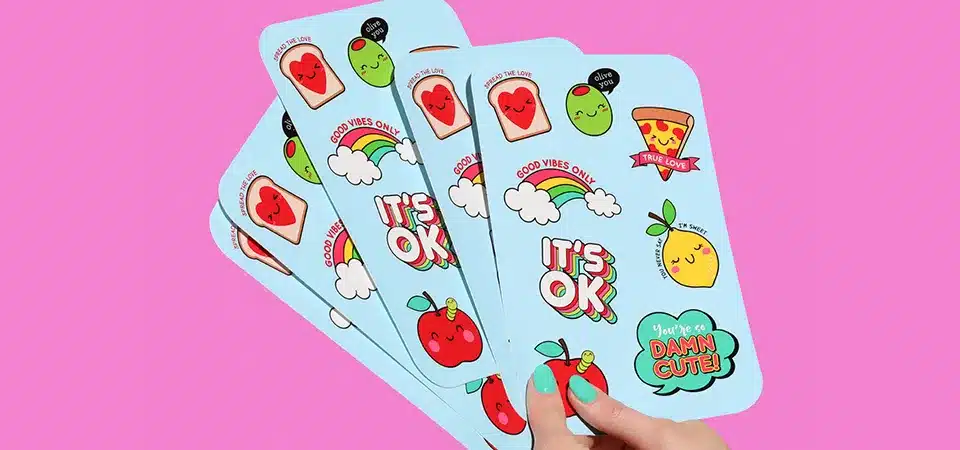
In my shop, this is a very important distinction. It helps me give my clients exactly what they need. Think of it this way: you give someone a sticker, but you put a label on something. Stickers are for marketing. They are meant to be handed out at events, included in packages as a free gift, or sold as individual items. They need to look cool so people will want to stick them on their laptops or cars. Because they are handled one by one, we cut them individually.
Labels, on the other hand, are workhorses. Their main job is to provide information on a product. Think of a label on a candle jar that lists the scent and ingredients, or a label on a shipping box. Because a business owner might need to apply hundreds of these in a day, they come on a roll or a sheet. This format makes it much faster to peel and stick them during the packaging process. I had a client who sold hot sauce. He first ordered 500 individually cut "stickers" for his bottles. It took him hours to peel each one. For his next order, we printed them as "labels" on a roll, and it cut his packaging time by 80%.
| Feature | Custom Sticker | Custom Label |
|---|---|---|
| Primary Use | Promotion, branding, decoration. | Information, identification. |
| Format | Individually cut (die cut, kiss cut). | On rolls or sheets. |
| Application | By hand, given out freely. | By hand or machine, on products. |
| Goal | To be seen and shared. | To inform and organize. |
How long will my stickers last?
You spend money on beautiful new stickers for your brand. But after a few months in the sun, they fade and peel. This makes your brand look cheap and temporary.
A high-quality custom vinyl sticker with a protective laminate can last 3 to 5 years outdoors. Indoors, it can last much longer. The lifespan depends on the materials, ink, and where it's placed.
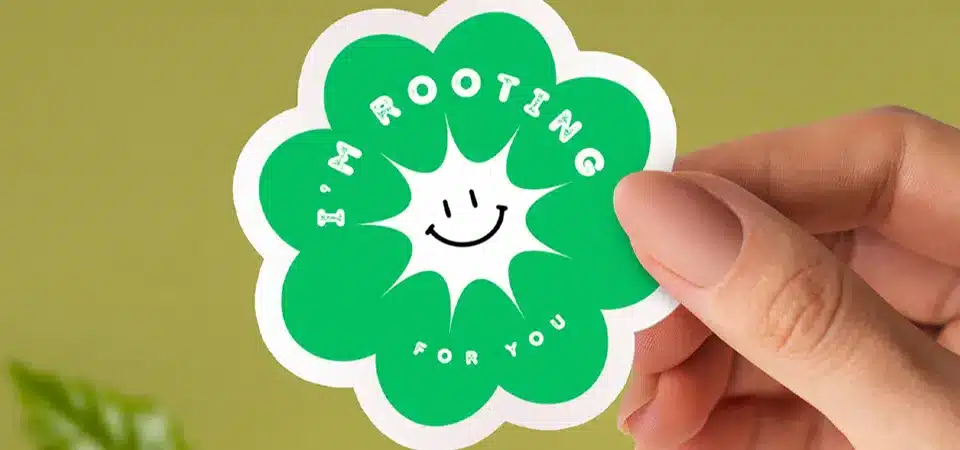
"Will it last?" This is a question I care about deeply. A sticker that fades or peels is a bad advertisement for my client and for my business. The durability of a sticker comes down to three things: what it's made of, how it's printed, and where it lives.
A sticker's biggest enemies are sunlight, water, and friction. To fight them, we use a specific set of tools. First, we use vinyl as the main material, not paper. Vinyl is a type of plastic, so it's naturally waterproof and much harder to tear. Second, we use durable inks like eco-solvent inks, which are resistant to fading. Third, and most importantly, we add a clear laminate over the top. This laminate is like a superhero's shield. It contains UV blockers that stop the sun's rays from fading the ink. It also provides a scratch-proof and waterproof barrier.
I have a test I run myself. Whenever we get a new material, I print my own company logo and stick it on my car. It sits outside in the sun and rain all year. This helps me see exactly how it holds up. It's how I know that the laminated vinyl we use can truly survive for years. So when a client asks how long their sticker will last, I can give them a confident answer based on real-world results.
How can you get your own custom stickers?
You want amazing custom stickers, but the process feels overwhelming. You are afraid of wasting money on a bad design or a low-quality printer. Just follow these simple steps.
First, create high-quality artwork, preferably in a vector format. Then, find a great supplier who offers premium materials and free design proofs. This ensures your final stickers look exactly how you imagined them, with fast turnaround times.
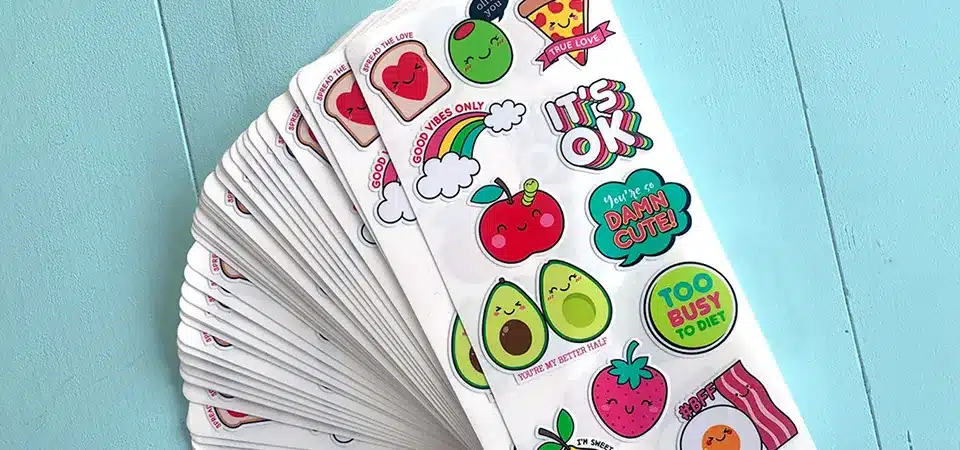
Getting your own stickers is easier than you think when you break it down. As a printer, my goal is to make this process smooth for my clients. It all comes down to getting two things right: your artwork and your printing partner.
Create high-quality artwork
Your sticker will only look as good as the file you start with. The best format is a vector file (like an AI, PDF, or EPS file). Vector art is made of lines and curves, so it can be scaled to any size without getting blurry. If you only have a pixel-based file like a PNG or JPG, make sure it is high resolution—at least 300 dots per inch (DPI) at the size you want to print. This prevents the final sticker from looking pixelated or fuzzy.
Find a great supplier
Your supplier is your partner in this process. A good one will help you succeed. Here is what I believe is most important, and what we focus on in my business:
Free design proofs
This is a critical step. A proof is a digital picture of what your final sticker will look like, including the custom cut line. It's your last chance to check for any spelling mistakes or design issues before hundreds are printed. I never print a job without the client approving their proof first. It eliminates mistakes and ensures the client is happy.
Premium materials
A great supplier should be upfront about the materials they use. Ask if they use durable vinyl and a protective laminate. This is the difference between a sticker that lasts for years and one that lasts for weeks. Don't be afraid to ask for samples to feel the quality yourself.
Fast turnaround times
As a small business owner, I know that speed matters. Because we do all our printing in-house, I have full control over the production schedule. This means we can offer fast and reliable turnaround times, so you get your stickers when you need them.
Conclusion
A custom sticker is a powerful tool. By understanding its materials, uses, and how to order correctly, you can create a unique, durable product that makes your brand stand out.

